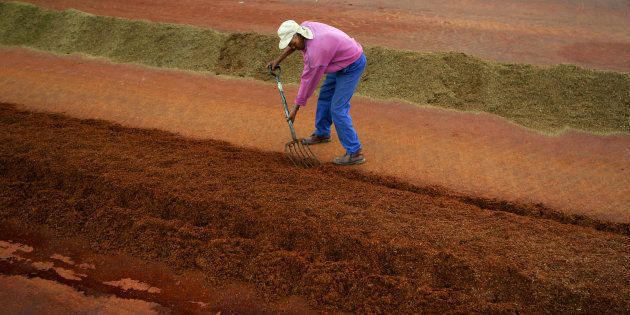
The South African Weather Service has brought a bit of good news. In its Seasonal Climate Watch report for August 2017, the bureau said there was a possibility of wet weather in the south-western parts of the country between August and October 2017.
This would be a welcome relief after the weeks of dryness in the Western Cape during the first half of its traditionally rainy season. Also encouraging is that other climate observers, such as the United States-based George Mason University Weather and Climate data team, have predicted possible showers across the Western Cape in the first few weeks of August.
The dam level update for the week ending August 7 2017 indicated that dams in the Western Cape were, on average, at 28 percent, which is a 1 percent improvement on the previous week but down by 29 percent from a year earlier.
Switch to Canola and Barley
Winter crops are not in good shape and major ones such as wheat are about a month and a half behind schedule. But although some analysts had expected a significant decline in the area planted with winter crops because of the dry spell, the results actually paint the opposite picture. Data from the National Crop Estimates Committee show that the preliminary area plantings for winter crops are 684,650 hectares, of which 73 percent is winter wheat.
This uptick in planting is not distributed evenly, however. It is largely dominated by canola and barley, which have increased by 28 percent and 11 percent on the year to 87,000 hectares and 98,800 hectares respectively. Meanwhile, winter wheat area plantings have dropped to 498,850 hectares, down by 2 percent from the previous season.
It is clear from this data that the decline in area planted with winter wheat was largely because of a switch to other winter crops. Much emphasis is placed on the Western Cape because it is the main dryland winter wheat-producing region of South Africa. The Free State and Northern Cape are mostly irrigated and thus will benefit from higher water levels in their dams, which are more than 80 percent full in both provinces.
The majority of the agricultural jobs in the Western Cape province are in the horticulture and wine industries, which are mainly dryland.
A Major Employer
The Western Cape is a major agricultural employer, providing about 25 percent of the country's 835,000 agricultural jobs in the second quarter of this year. In addition, the province makes up 22 percent of the country's agricultural contribution to national gross domestic product.
Therefore, an improvement in weather conditions in the province could have widespread benefits. It is worth noting, however, that the majority of the agricultural jobs in the province are in the horticulture and wine industries, which are mainly dryland.
No La Niña or El Niño
There is also good news for summer crop production, following the South African Weather Service's monitoring of the El Niño Southern Oscillation (ENSO) phenomenon for a number of months. The weather service can now "confidently predict" that the ENSO will remain in a neutral phase during summer.
This 2017-2018 summer production season should therefore be normal, as neither a La Niña nor an El Niño event is predicted. Overall, the incoming data suggests that the next few weeks could bring relief to winter crop-producing areas, securing jobs and making food available.
*This post is an extract from Sihlobo's Farmers Weekly column on August 11 2017.
